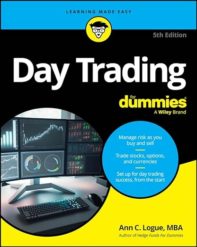 The April 30 issue of The New Yorker has a fascinating article about the Sri Padmanabhaswamy Temple in Trivandrum, India. Over centuries, people have made donations to the temple’s deity, Vishnu, and a huge fortune has accumulated. As in – possibly $20 billion in gold and precious stones.
The April 30 issue of The New Yorker has a fascinating article about the Sri Padmanabhaswamy Temple in Trivandrum, India. Over centuries, people have made donations to the temple’s deity, Vishnu, and a huge fortune has accumulated. As in – possibly $20 billion in gold and precious stones.
Indian property law has an interesting twist. The gods are allowed to own property, but they are considered to be minors and therefore must have a legal guardian who oversees it. In the United States, churches are owned by groups of people who are organized into non-profit institutions. The land, buildings, and bank accounts are held by a congregation, a parish, a diocese, or whatever structure the denomination has. The fiduciary responsibility is toward the institution, not the pastor and not the god. In many countries with a national religion, the taxpayers own the buildings and pay at least some of their expenses. This is the case with the Church of England.
As a churchgoing person, I tend to side with Bono’s lyrics from Bullet the Blue Sky”: “The God I believe in isn’t short of cash, mister!” That being said, it does take cash to do the work of God on earth: to feed the hungry and love your neighbor and work for justice. Churches need buildings for education, for fellowship, and as a place for people to meet to do the work of the church, whether it be handing out groceries or practicing the songs for Sunday’s services.
As a financial person, I’m fascinated with the very notion of a deity holding property. What does Vishnu need with gold and precious gems? And, of course, that’s one of the questions being raised about this temple’s wealth. Those who are believers are concerned that the wealth is being taken from their god through theft, mismanagement, and misappropriation; those who do not believe are thinking that it might be nice to use the wealth to improve the lives of the people in the community.
There’s another wrinkle here. Many churches do have valuable objects, mostly in the form of art and artifacts. However, most of these items have extrinsic value – the materials used in them are not inherently valuable. What’s the old paint on an old ceiling worth? Not much, unless it happened to be painted by Michelangelo. The value is because of the beauty, scarcity, and history, not the paints and brushes. Furthermore, many churches make these items available to the public. The Vatican’s massive art collection is on display at its museum (€15, with discount rates and occasional free days). There’s an online exhibit, too, so that you can enjoy the works without getting in an airplane.
The Trivandrum treasures are locked away in four vaults, and only two of those hold objects that are ever on display. There’s nothing for people to enjoy, marvel at, or meditate upon. Furthermore, they are mostly commodities with great intrinsic value. Gold bars have value as gold bars, and each one looks pretty much the same as the next, no matter how old it is.
I don’t know what the outcome should be, but I’m interested to see how the Indian courts settles this. The laws of people and the laws of God intersect every day, but never with this much wealth at stake.



Fascinating. I never knew about this. It surely would be nice to use those billions to help the poor, for which India is famous.